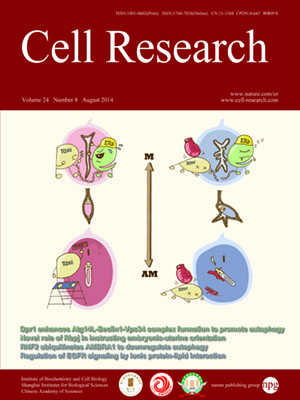
Volume 24, No 8, Aug 2014
ISSN: 1001-0602
EISSN: 1748-7838 2018
impact factor 17.848*
(Clarivate Analytics, 2019)
Volume 24 Issue 8, August 2014: 1009-1012
LETTERS TO THE EDITOR
Genome-wide identification of CRISPR/Cas9 off-targets in human genome
Jinzhi Duan1,2,*, Guangqing Lu1,2,*, Zhan Xie2, Mingliang Lou2, Jiao Luo2, Lei Guo2 and Yu Zhang1,2
1Graduate Program, Peking Union Medical College and Chinese Academy of Medical Sciences, Beijing 100730, China
2National Institute of Biological Sciences, Beijing 102206, China
Correspondence: Yu Zhang,(zhangyu@nibs.ac.cn)
Genome editing techniques have been rapidly developing in recent decades1. Among them, site-specific cleavage of genomic loci in various organisms by homing endonucleases (HEases)2, Zinc finger nucleases (ZFNs)3, transcription activator-like effector nucleases (TALENs)4, and most recently the CRISPR (clustered regularly interspersed short palindromic repeats)/Cas9 system5, has been utilized widely not only in laboratories but also for translational studies. The central issue of genome editing is how to achieve specific and robust recognition of particular genomic sequences. In the case of HEases, ZFNs, and TALENs, this is achieved by specific intermolecular interactions between nucleotides and protein motifs, while for CRISPR/Cas9, the specificity is due to Watson-Crick base pairing between CRISPR RNA (crRNA) and its recognition sequences. The crRNA targets a 20-bp complementary target DNA sequence, which is flanked by a proto-spacer adjacent motif (PAM).
10.1038/cr.2014.87
FULL TEXT | PDF
Browse 2392


